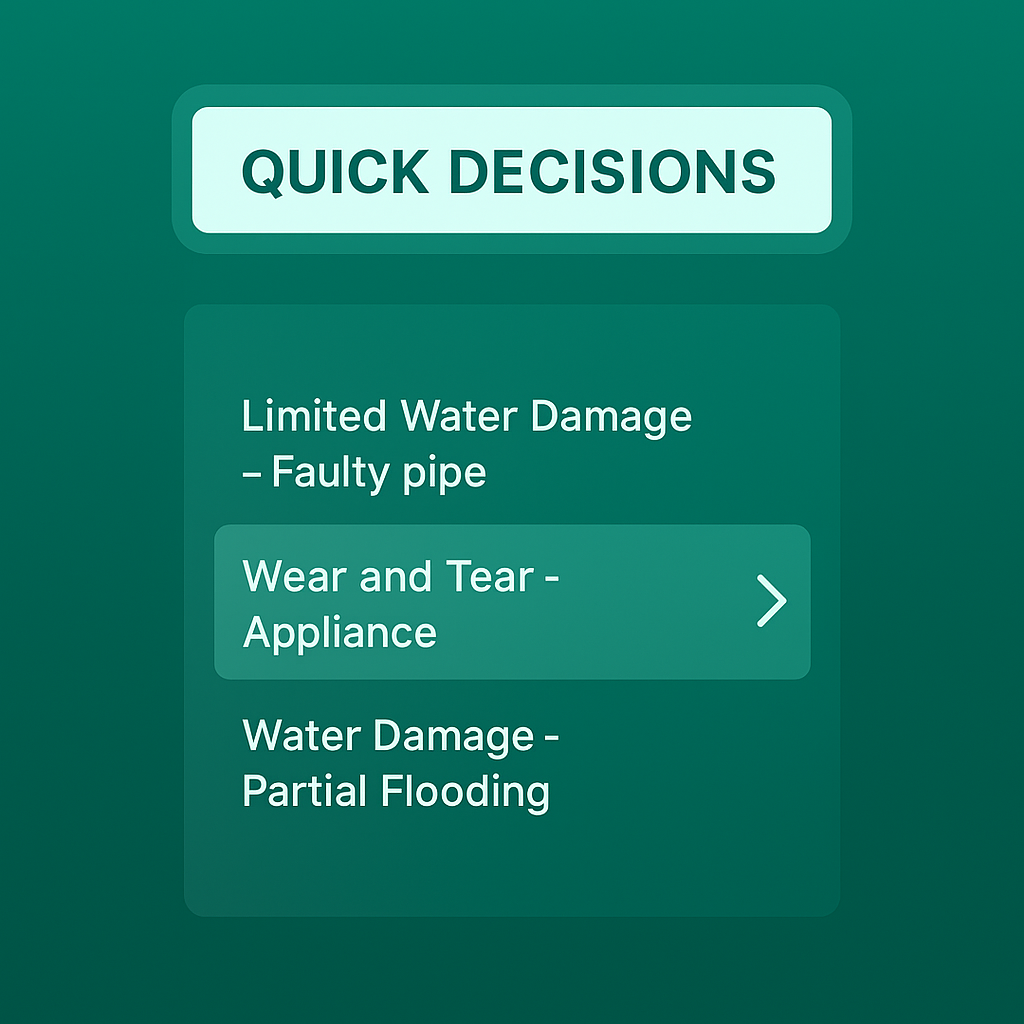Insurance claims teams rely on Kyber to streamline correspondence, reduce manual entry, and ensure every letter is accurate and compliant. Before Quick Decisions, adjusters benefited from Kyber’s auto-population and AI-driven templates, but still needed to manually enter the core decision for each letter. This step, while simple, added extra clicks and required new users to learn how to prompt the AI effectively. Quick Decisions is designed to make this process even faster and more intuitive, both for seasoned adjusters and those new to Kyber.
Feature Overview: What We Built and Why
Quick Decisions is a new enhancement to Kyber’s AI templates, specifically for high-frequency use cases like denials and partial denials. The feature introduces configurable, organization-level decision prompts that adjusters can select with a single click. This eliminates the need to type out common decisions or learn prompt engineering, while still ensuring that every letter is tailored to the specifics of the claim and policy language in force.
Arvind Sontha, CEO of Kyber, explains:
“We saw that even with 99% of fields auto-populated, the last step, entering the decision, was a point of friction, especially for new users. Quick Decisions removes that barrier, making it easier for teams to get up to speed and generate accurate correspondence, fast.”
How It Works: Step-by-Step
- Select an AI Template: Adjusters begin by choosing the appropriate template, such as a partial denial.
- Enter Claim Number: The claim number is entered, and Kyber auto-populates all available fields.
- Choose a Quick Decision: Instead of typing out the decision, adjusters see a list of pre-configured, high-frequency decisions relevant to the claim type (e.g., “wear and tear appliance,” “limited water damage,” “faulty pipe”).
- One-Click Selection: Adjusters click the appropriate decision. Kyber instantly formats the decision in a way that aligns with best practices and organizational standards.
- Review and Send: The letter is ready for review and can be sent with confidence, knowing the decision is clearly stated and compliant.
This process is fully embeddable within any claim system providing a seamless, single-pane-of-glass experience.
Real-World Impact
Quick Decisions delivers two key benefits:
- Faster Letter Generation: By reducing the need for manual typing and decision entry, adjusters can generate letters in fewer clicks. This saves valuable time, especially across high-volume teams.
- Smoother Onboarding: New users no longer need to learn how to prompt the AI or worry about phrasing decisions correctly. They start with best-in-class prompts, reducing the learning curve and increasing confidence from day one.
Arvind notes,
“We’re not just saving time. We’re making it easier for teams to adopt Kyber and maintain high standards of accuracy and compliance, even as staff changes or new team members come on board.”
Why It Matters: Strategic Implications for Claims Teams
For claims leaders, Quick Decisions is more than a convenience. It’s a way to standardize decision language, reduce errors, and ensure that every letter reflects current policy language and organizational best practices. By streamlining a key step in the correspondence process, teams can focus on higher-value work and respond to policyholders faster.
Quick Decisions also supports operational resilience and governance. As teams grow or change, the feature ensures that new adjusters can contribute effectively without extensive training. This helps organizations maintain service levels and compliance, even during periods of transition.
Explore Quick Decisions Today
Quick Decisions is now available in Kyber. To see how it can accelerate your team’s workflow and support faster onboarding, reach out to your Kyber representative or book a demo.
As Arvind puts it:
“Our goal is to make every step of claims correspondence as efficient and intuitive as possible. Quick Decisions is a small change with a big impact for adjusters and claims leaders alike.”




.png)




.png)
